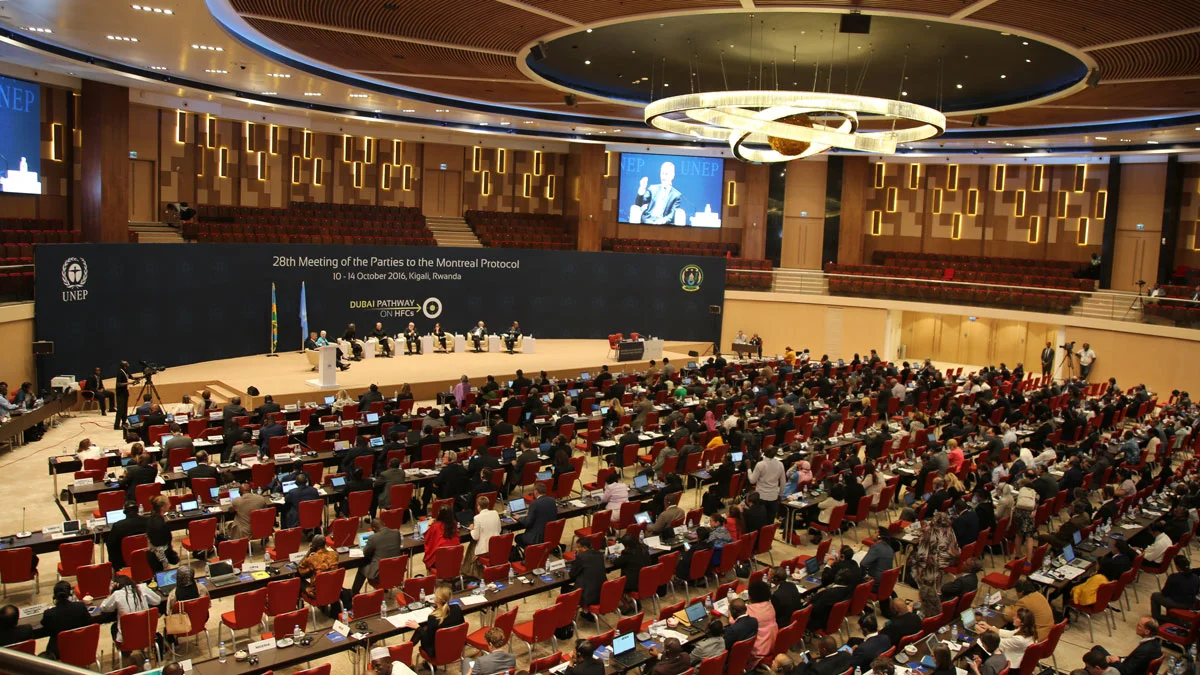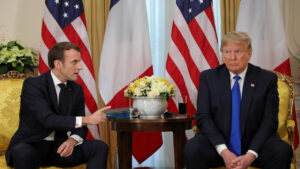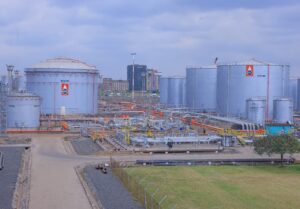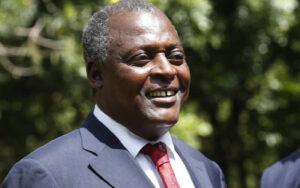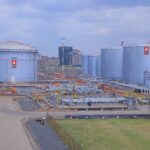On September 16, 1987, a historic multilateral environmental agreement was forged, one that would change the course of environmental protection and set a benchmark for global cooperation. The Montreal Protocol on Substances that Deplete the Ozone Layer was adopted to regulate the production and consumption of nearly 100 man-made chemicals known as ozone-depleting substances (ODS). These chemicals, once released into the atmosphere, cause significant damage to the stratospheric ozone layer, our planet’s protective shield against harmful ultraviolet radiation from the sun.
A Universal Treaty with a Unified Goal
The Montreal Protocol stands as a rare testament to international unity, achieving universal ratification—an unparalleled feat among global treaties. It meticulously phases down the consumption and production of ODS through a step-wise approach, accommodating different timetables for developed and developing countries, the latter being referred to as “Article 5 countries.” Both groups of countries bear equal but differentiated responsibilities, all bound by specific, time-targeted, and measurable commitments.
Framework and Implementation
The Protocol’s framework is comprehensive, addressing Control Measures (Article 2), Calculation of Control Levels (Article 3), Trade Control with Non-Parties (Article 4), Special Considerations for Developing Countries (Article 5), Data Reporting (Article 7), Non-compliance (Article 8), and Technical Assistance (Article 10). The substances controlled under the treaty are listed in various annexes, including Annex A (CFCs, halons), B (other fully halogenated CFCs, carbon tetrachloride, methyl chloroform), C (HCFCs), E (methyl bromide), and F (HFCs).
The treaty’s evolving nature reflects new scientific, technical, and economic developments. The governance body, the Meeting of the Parties, supported by an Open-ended Working Group, ensures that the Protocol remains adaptive and effective. Both groups convene annually, aided by the Ozone Secretariat, based at the UN Environment Programme headquarters in Nairobi, Kenya.
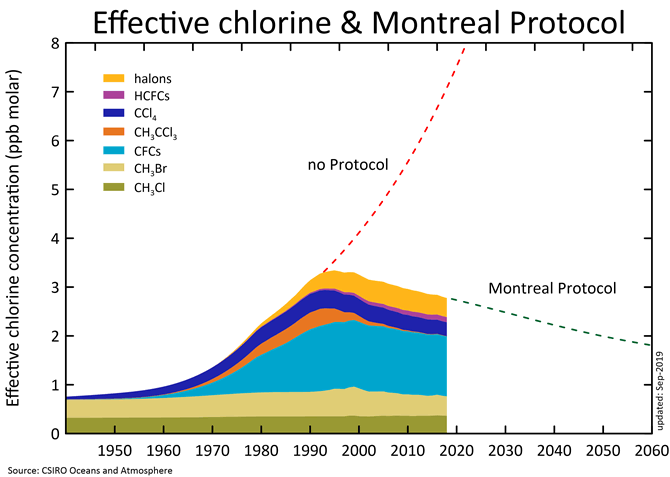
Support Mechanisms: The Multilateral Fund
Established in 1991 under Article 10, the Multilateral Fund for the Implementation of the Montreal Protocol is crucial for aiding developing countries in meeting the Protocol’s control measures. Managed by the Executive Committee, comprising seven members each from Article 5 and non-Article 5 countries, the Fund supports a wide array of projects, including industrial conversion, technical assistance, training, and capacity building, amounting to over US$3.9 billion since its inception. The Fund’s activities are implemented by four international agencies—UNEP, UNDP, UNIDO, and the World Bank—along with bilateral agencies from non-Article 5 countries.
Accelerating HCFC Phase-Out
Hyhydrochlorofluorocarbons (HCFCs), widely used in refrigeration, air-conditioning, and foam applications, are being phased out under the Protocol due to their ozone-depleting and high global warming potentials (GWP). Recognizing the environmental benefits, the Parties agreed in September 2007 to expedite the HCFC phase-out. Developed countries were set to complete this by 2020, while developing countries embarked on a stepwise reduction starting in 2013, aiming for complete phase-out by 2030.
In Article 5 countries, this phase-out is vigorously supported by the Multilateral Fund through HCFC Phase-out Management Plans (HPMPs), investment projects, and capacity-building activities. The Parties promote alternatives to HCFCs that minimize environmental impacts, particularly on climate, and emphasize energy-efficient technologies.
The Kigali Amendment: Tackling HFCs
Hydrofluorocarbons (HFCs), initially introduced as non-ozone-depleting alternatives, have become widespread in various applications. Despite not harming the ozone layer, some HFCs possess high GWPs, contributing significantly to global warming. With HFC emissions growing rapidly, urgent action became imperative.
On October 15, 2016, at the 28th Meeting of the Parties in Kigali, Rwanda, the Parties agreed to phase down HFCs. The Kigali Amendment, effective January 1, 2019, mandates a gradual reduction of HFCs by 80-85% by the late 2040s. Developed countries initiated reductions in 2019, with developing countries set to freeze HFC consumption levels in 2024, and some by 2028. This amendment marks a crucial step in continuing the legacy of the Montreal Protocol.
A Legacy of Environmental Stewardship
The full and sustained implementation of the Montreal Protocol promises the recovery of the ozone layer by mid-century. Without this treaty, ozone depletion would have surged tenfold by 2050, leading to millions of additional cases of melanoma, other cancers, and eye cataracts. The Protocol is estimated to save two million people annually from skin cancer by 2030.
To date, the Parties have successfully phased out 98% of ODS globally, significantly contributing to climate protection by reducing greenhouse gas emissions by the equivalent of 135 gigatons of CO2 from 1990 to 2010. The Kigali Amendment alone is projected to prevent up to 105 billion tonnes of CO2 equivalent emissions, helping to avert up to 0.5°C of global temperature rise by 2100.
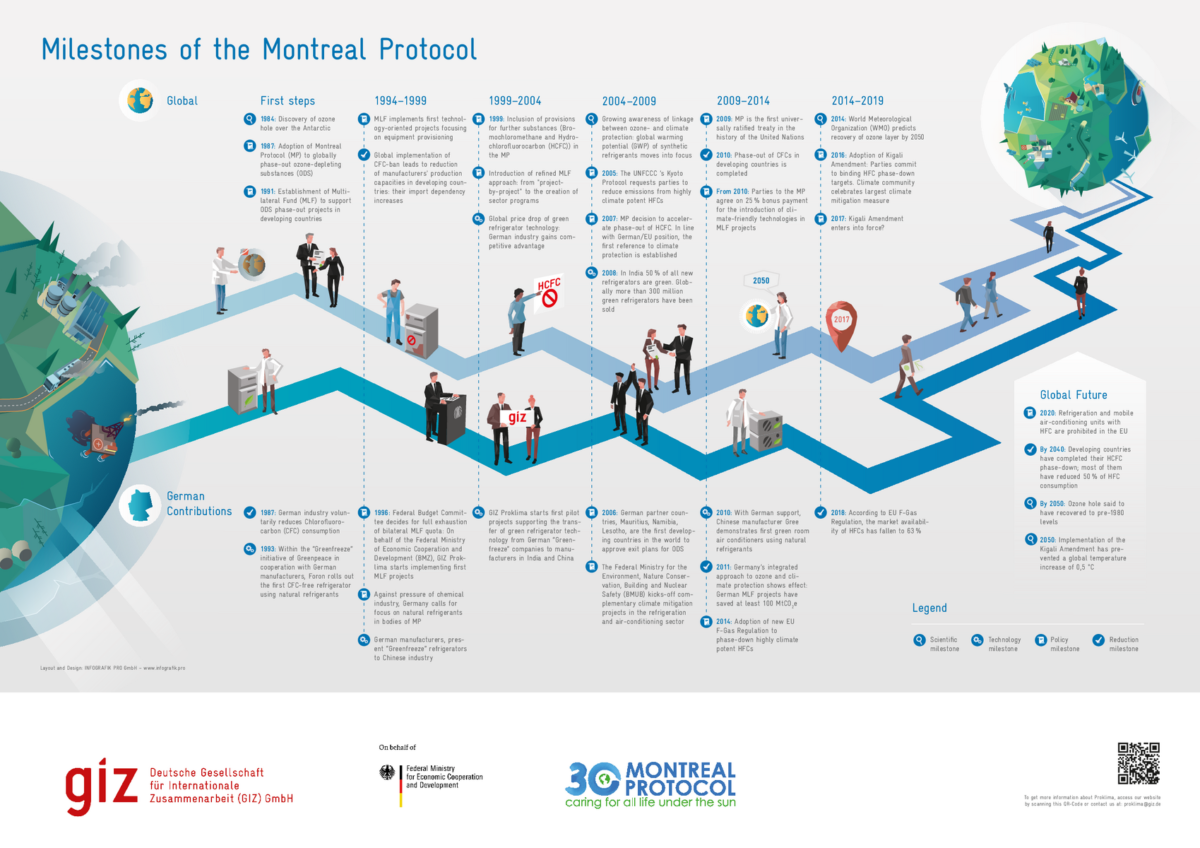
A Model for Global Cooperation
The Montreal Protocol’s remarkable success showcases the power of international cooperation. It not only contributes to the UN Sustainable Development Goals but also provides an inspiring example of what can be achieved when the world unites for a common cause. Since its adoption in 1987, the Protocol has evolved into one of the most successful environmental agreements of all time, continually demonstrating the transformative impact of collective action on global environmental challenges.


